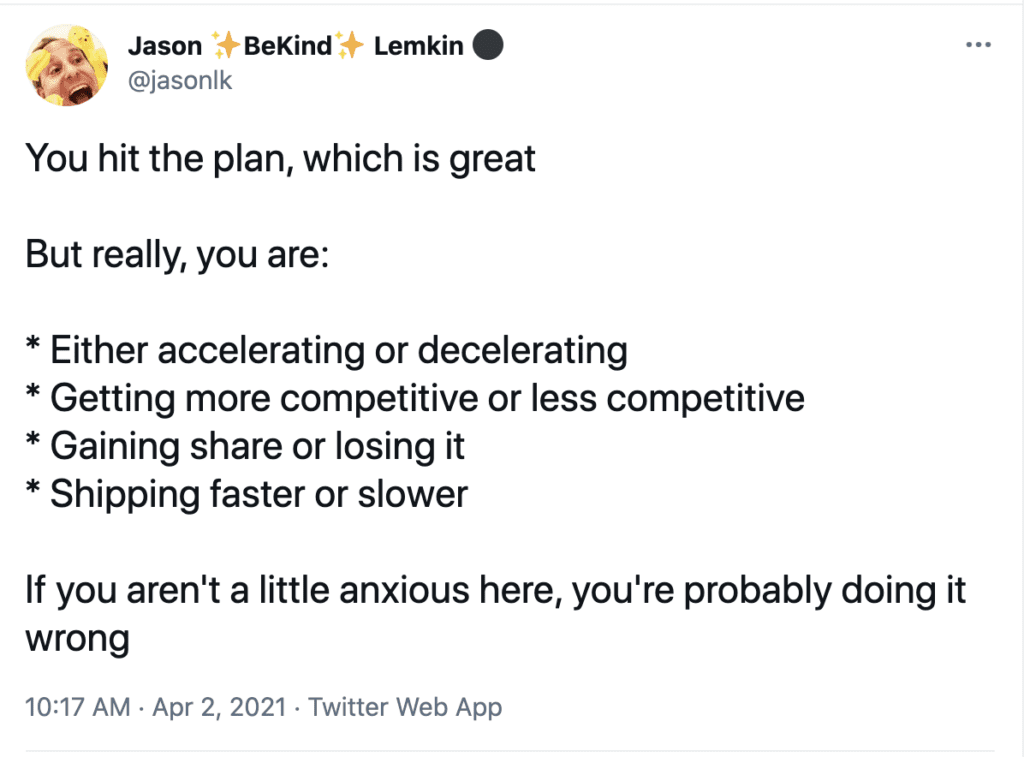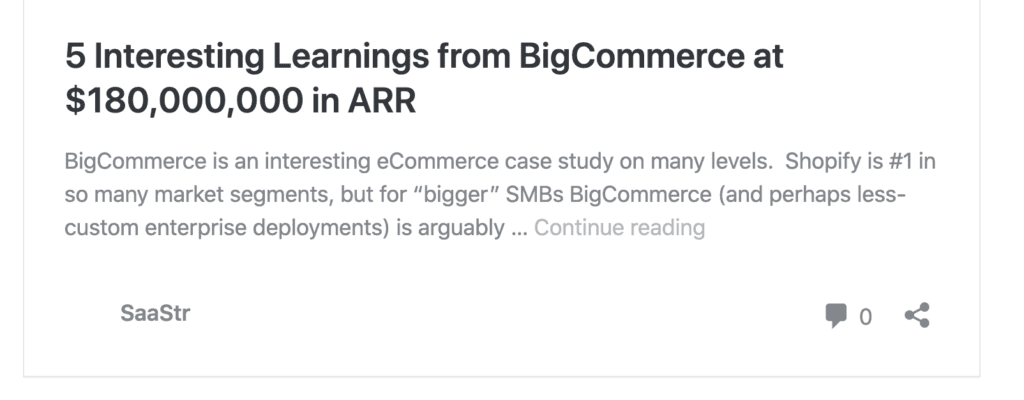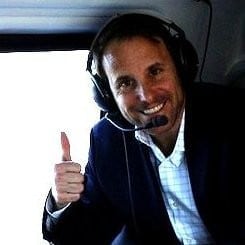There’s a metric the very top founders track quietly, but ruthlessly, that I find other founders either don’t track, or sort of hide from. That’s % of marketshare. And importantly, if it’s growing, or shrinking.
If you are blaming "the markets" or "macro" or "the downturn" for slow growth …
You sure better at least be growing as fast as the competition
Otherwise, it's you, not the markets
— Jason ✨🇬🇧SaaStr LDN June 4-5✨ Lemkin (@jasonlk) June 20, 2023
Why does it matter? Well, your growth, or lack thereof, of market share is the #1 sign of potential decay in your product. And potentially also, of the need to upgrade the team.
Think about the basic math for a moment:
- The #2-#5 players should be growing faster on a percentage basis than #1. You’re starting from a smaller base, with a unique competitive advantage of some sort. You have to be growing faster on a percentage basis than they are. They should be adding more new bookings than you in most cases. But growing more slowly.
- In a fast-growing market, it’s important to not be quietly left behind just by growing more slowly. If you got to, say, $10m ARR this year, growing 70% … that’s pretty good, if not quite world-class. But if your similar competition is growing 100% at $20m ARR, that’s a problem. It compounds. If that delta remains that way for a while, you’ll fall further and further behind.
- In a slower-growing market, it’s important to not let macro challenges be an excuse to fall behind. If your growth has fallen from 100% to 50%, but the competition is still growing 80% … the problem is you. Not just the market.
And a few related points:
- Comparing your growth directly to your competitors keeps it honest. Why are they growing faster? You can’t blame it on seasonality. Your competitors have the same seasons. You can’t blame it on market changes. Again, they play in the same market.
- It challenges you, in the right way, to avoid complacency. All software slowly but surely gets out of date. Competition really does make us stronger. And we tend to think we’re better positioned vs. the competition than we really are. Knowing your relative growth rates challenges you to do … better. When it’s hard enough just to get the work done you already have to get done.
Now, this isn’t to say you can’t still have a great outcome growing more slowly than the competition. A few examples:
#1. $4B BigCommerce is growing more slowly than its $100B bigger rival, Shopify. That’s a big, big gap. But BigCommerce is still worth a very impressive $4B. More here.
#2. $4.5B DigitalOcean is growing more slowly than its mega competitors Azure, AWS, etc. But it’s still worth billions, in a very large market.
#3. $4B NewRelic is growing more slowly than $27B Datadog, but again still worth billions.
You can’t always grow faster than your top rival. But you can at least be honest about it, and at least the co-founders can quietly own this as a core KPI.
Track it for real. Even if just hitting the core plan is enough for the rest of the team.
And if nothing else, at each company meeting and board meeting, come up with a simple tracker. Are we gaining share versus the competition — or not? Track it over time, each time. (Yes, you may have to make some educated guesses and get some data from unusual sources. If nothing else, you can pretty reliably track headcount growth on LinkedIn).
Especially in a growing market, like most SaaS categories, you can both grow and fall behind at the same time.
As founders, it’s your job to see that, even when others can’t. And usually, you’ll see it early enough there when there is still plenty enough time to do something about it.



